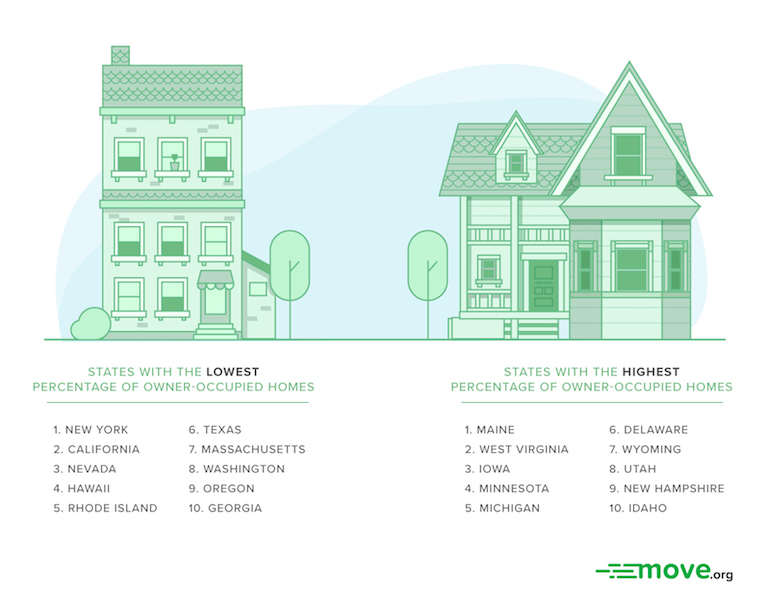A yard, a few tax breaks, the ability to replace that outdated green and yellow tile in your bathroom—all reasons to buy a home.
But there are plenty of reasons to continue to rent, too. In the short run, it’s easier on the pocketbook (since you don’t have to make a five-figure down payment upfront). It relieves you from the burden of managing maintenance and repairs. And, if you’re looking to live in the heart of the Big Apple, it may be your only realistic option.
Every state in America has more owner-occupied homes than residences filled with renters, but some states are more evenly split than others. We dug up the stats to see where Americans are choosing to buy versus rent—and how much it costs them each month to keep a roof over their heads.





